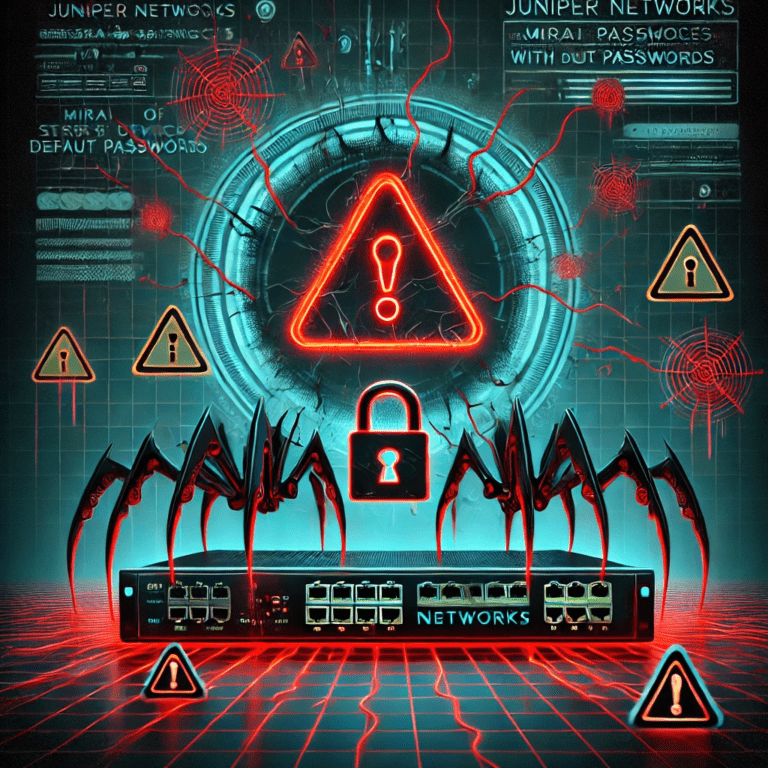A Comprehensive Guide on Risk Management and Information Security Policies to Comply with the Newly Introduced NIS2 Standard
Introduction to the NIS2 Directive
The Network and Information Systems Directive 2 (NIS2 Directive) is an updated legislative framework introduced by the European Union to bolster cybersecurity across member states. Originating from the need to address growing cyber threats and improve the resilience of critical infrastructure, NIS2 builds upon the foundation laid by its predecessor, NIS1. While NIS1 was a pioneering step towards unified cybersecurity measures, it became evident that evolving cyber threats required more comprehensive and robust policies.
The primary objective of the NIS2 Directive is to enhance the overall cybersecurity posture of organizations operating within the EU, ensuring a higher level of protection against cyber incidents. By establishing a more stringent set of requirements, NIS2 aims to mitigate risks associated with network and information systems that are vital to the smooth functioning of the economy and society. This directive encompasses a wider range of sectors and introduces more detailed provisions for risk management and incident reporting.
One of the critical aspects of NIS2 is its broadened scope. Unlike NIS1, which primarily focused on essential services like energy, transport, banking, and healthcare, NIS2 extends its reach to include more sectors such as public administration, digital infrastructure, and the production and distribution of drinking water. This expansion ensures that a greater number of organizations are covered, thereby strengthening the collective cybersecurity framework across the EU.
Another significant difference between NIS1 and NIS2 is the emphasis on a risk-based approach to cybersecurity. NIS2 mandates that companies must not only implement appropriate technical and organizational measures but also conduct regular risk assessments to identify and mitigate potential threats. This proactive stance encourages continuous improvement and adaptation to emerging cyber risks.
Moreover, NIS2 introduces stricter requirements for incident reporting. Organizations are now required to report significant incidents within 24 hours of detection, ensuring that timely information is available for a coordinated response. This rapid reporting mechanism is crucial for minimizing the impact of cyber incidents and facilitating swift recovery.
In essence, the NIS2 Directive represents a critical evolution in the EU’s cybersecurity strategy. By extending its scope, emphasizing a risk-based approach, and enhancing incident reporting requirements, NIS2 aims to create a more secure and resilient digital environment for all member states.

Understanding Risk Management Under NIS2
The NIS2 Directive places a significant emphasis on the principles of risk management, which are critical for organizations aiming to comply with the new standards. Risk management under NIS2 revolves around the systematic identification, assessment, and prioritization of risks that could potentially affect information systems and data. This proactive approach is designed to mitigate threats before they materialize, thereby safeguarding digital assets.
To align with NIS2, organizations must first identify the potential risks to their information systems. This involves a thorough analysis of both internal vulnerabilities, such as outdated software or insufficient security measures, and external threats, like cyberattacks or natural disasters. Once identified, these risks must be evaluated based on their potential impact and the likelihood of their occurrence.
Assessment of risks involves quantifying the severity of each identified threat. This is typically achieved through risk assessment methodologies that consider factors such as the potential financial loss, data breaches, and operational disruptions. By assigning a level of criticality to each risk, organizations can prioritize their mitigation efforts accordingly.
Prioritization is a crucial step in the risk management process. Organizations must allocate resources efficiently to address the most critical risks first. This ensures that the most significant threats to information security are managed effectively, reducing the potential for severe consequences. Employing a risk-based approach allows organizations to focus on areas that require immediate attention, thereby optimizing their risk management strategies.
A proactive approach to risk management is essential under the NIS2 Directive. Instead of reacting to incidents as they occur, organizations are encouraged to anticipate potential threats and address them proactively. This shift from a reactive to a proactive stance not only enhances compliance with NIS2 but also strengthens the overall security posture of the organization. By continuously monitoring and reviewing risks, companies can adapt to the evolving threat landscape and ensure the ongoing protection of their digital assets.
Developing Comprehensive Information Security Policies
Creating robust information security policies is a critical endeavor to ensure compliance with the NIS2 Standard. These policies must be meticulously structured to address all facets of information security, providing a comprehensive framework to safeguard organizational assets. The process of developing these policies necessitates a collaborative approach, involving key stakeholders from various departments, including IT, legal, compliance, and operational units. This multi-disciplinary involvement ensures that the policies are well-rounded and consider perspectives from different areas of expertise.
The structure of information security policies should be clear and systematic. A typical policy document should include an introduction outlining the scope and objectives, followed by detailed sections on roles and responsibilities, risk assessment procedures, and specific security controls. The policies must also outline incident response protocols and disaster recovery plans, ensuring the organization is prepared to handle security breaches effectively. It is crucial that these policies align with the requirements of the NIS2 Standard, which emphasizes the need for a proactive and resilient security posture.
Integration of security controls is a vital aspect of these policies. Controls should be categorized into preventive, detective, and corrective measures, each designed to address different stages of threat management. Preventive controls, such as access controls and encryption, are aimed at stopping incidents before they occur. Detective controls, including monitoring and logging, help in identifying and diagnosing security events. Corrective controls, like patch management and incident response, focus on mitigating and recovering from security breaches. These controls must be regularly reviewed and updated to adapt to new threats and technological advancements.
Moreover, it is essential that information security policies remain dynamic and flexible. The threat landscape is continuously evolving, and regulatory requirements are subject to change. Therefore, policies should be reviewed periodically and updated as necessary to reflect these changes. Regular training and awareness programs for employees are also crucial in ensuring that everyone understands and adheres to the security policies. By developing comprehensive, adaptable, and well-integrated information security policies, organizations can effectively manage risks and maintain compliance with the NIS2 Standard.
Implementing Technical and Organizational Measures
To successfully comply with the newly introduced NIS2 standard, companies must deploy a combination of technical and organizational measures aimed at strengthening their overall security posture. This involves the implementation of advanced security technologies, well-defined incident response mechanisms, and comprehensive staff training programs. Each of these elements plays a crucial role in ensuring robust protection against potential threats, thereby aligning with the regulatory requirements.
Deploying state-of-the-art security technologies is the first step in safeguarding information assets. This includes the integration of firewalls, intrusion detection and prevention systems (IDPS), and encryption protocols. These technologies work together to establish a secure perimeter, detect unauthorized access, and protect sensitive data from interception. Regular updates and patches are essential to maintain their efficacy and to defend against emerging vulnerabilities.
Incident response mechanisms are equally vital in addressing security breaches effectively. A well-documented incident response plan should outline the procedures for detecting, reporting, and mitigating security incidents. This plan must include clear roles and responsibilities, communication channels, and recovery procedures. Conducting regular drills and simulations can enhance the readiness of the response team, ensuring swift and coordinated action during an actual incident.
Staff training programs are integral to fostering a security-aware culture within the organization. Employees at all levels should receive regular training on security policies, procedures, and best practices. This includes awareness of phishing attacks, password management, and data handling protocols. By empowering the workforce with knowledge and skills, organizations can significantly reduce the risk of human error, which is often a critical factor in security breaches.
Implementing these measures effectively requires a holistic approach that encompasses continuous monitoring and updating. This entails regular security assessments, audits, and reviews to identify gaps and areas for improvement. Utilizing automated monitoring tools can provide real-time insights into the security landscape, enabling proactive measures against potential threats. By staying vigilant and adaptive, organizations can ensure sustained compliance with the NIS2 standard, thereby enhancing their overall resilience against cyber threats.

Preparing for Compliance While Awaiting Local Laws
As organizations anticipate the full implementation of the NIS2 directive, proactive preparation is crucial for ensuring compliance. While local laws may not yet be fully enacted, companies can still take several practical steps to align with the overarching requirements of NIS2. One of the first actions is to conduct a thorough gap analysis. This process involves evaluating current practices and identifying areas where existing information security policies fall short of NIS2 standards. By pinpointing these gaps early, organizations can prioritize necessary updates and allocate resources effectively.
Updating existing policies is another critical step. Organizations should review their risk management and information security frameworks to ensure they encompass the broad scope of NIS2. This may include enhancing incident response protocols, refining data protection measures, and ensuring robust governance structures are in place. By reinforcing these policies, companies not only move closer to compliance but also strengthen their overall cybersecurity posture.
Enhancing cybersecurity capabilities is equally important. Given the evolving nature of cyber threats, organizations must invest in advanced security technologies and continuous monitoring solutions. This includes implementing threat detection systems, conducting regular vulnerability assessments, and ensuring timely patch management. Employee training and awareness programs are also essential to foster a culture of security within the organization. By equipping staff with the knowledge and skills to recognize and respond to threats, companies can mitigate potential risks more effectively.
Staying informed about national transpositions of the NIS2 directive is vital. As member states develop and implement their local laws, organizations must remain agile and ready to adjust their compliance strategies accordingly. This might involve subscribing to relevant industry newsletters, participating in professional forums, and engaging with regulatory bodies to receive timely updates. By maintaining a proactive stance and continuously refining their approach, organizations can navigate the complexities of NIS2 compliance with greater confidence and efficacy.
Conducting Regular Audits and Assessments
Regular audits and assessments play a pivotal role in maintaining compliance with the NIS2 standard. These evaluations serve as a continuous check on an organization’s adherence to established risk management and information security policies. To ensure ongoing compliance, different types of audits should be conducted at varying frequencies, each focusing on specific areas crucial to the organization’s security posture.
Internal audits are fundamental and should be performed quarterly. These audits typically involve a comprehensive review of internal processes, controls, and systems to identify any discrepancies or weaknesses. They also help in evaluating the effectiveness of the implemented security measures and ensure that all employees are adhering to the set protocols.
In addition to internal audits, annual external audits conducted by independent third-party assessors are highly beneficial. These assessments provide an unbiased review of the organization’s compliance status. They cover critical areas such as network security, data protection, incident response, and access controls. The fresh perspective brought by external auditors can unveil hidden vulnerabilities that might be overlooked internally.
Penetration testing, another vital form of assessment, should be conducted semi-annually. This involves simulating cyber-attacks to identify potential entry points and vulnerabilities within the organization’s infrastructure. Regular penetration tests help in proactively addressing weaknesses before they can be exploited by malicious actors.
The benefits of independent third-party assessments are manifold. They not only assure regulatory bodies of the organization’s commitment to compliance but also build trust with stakeholders and customers. These assessments often come with detailed reports outlining the identified vulnerabilities and recommended remedial actions.
Addressing identified vulnerabilities promptly is crucial. Delays in remediation can leave the organization exposed to potential threats and non-compliance penalties. Establishing a systematic approach to prioritize and resolve these issues ensures that the organization’s security posture is continually strengthened, aligning with the stringent requirements of the NIS2 standard.
Building a Culture of Cybersecurity
Fostering a cybersecurity-conscious culture within an organization is pivotal for maintaining robust information security and complying with the newly introduced NIS2 standard. A proactive approach to cybersecurity not only mitigates risks but also ensures that every member of the organization understands their role in protecting sensitive information. Creating an environment where cybersecurity is prioritized and integrated into daily operations requires a multi-faceted strategy.
Raising awareness is the first step in building this culture. Regular training sessions and workshops can equip employees with the knowledge and skills necessary to identify and respond to potential security threats. These educational initiatives should emphasize the importance of cybersecurity hygiene, such as recognizing phishing attempts, using strong passwords, and understanding the consequences of data breaches. Additionally, incorporating real-life scenarios and case studies can make these sessions more engaging and relatable.
Clear communication of roles and responsibilities is essential. Every employee, regardless of their position, should know their specific duties in maintaining information security. This can be achieved through detailed policy documents, regular briefings, and accessible resources that outline best practices. Establishing a clear protocol for reporting suspicious activities ensures that potential threats are addressed promptly and efficiently.
Creating an environment where cybersecurity is a shared responsibility involves fostering a sense of ownership among employees. Encouraging a culture of vigilance and accountability can be achieved by recognizing and rewarding individuals or teams who demonstrate exceptional cybersecurity practices. This not only reinforces the importance of these practices but also motivates others to follow suit.
Integration of cybersecurity into daily operations can be further supported by leveraging technology. Implementing advanced security tools and systems, such as firewalls, intrusion detection systems, and regular software updates, provides a strong defense against cyber threats. Additionally, conducting regular audits and assessments helps identify vulnerabilities and areas for improvement.
Ultimately, building a culture of cybersecurity is an ongoing process that requires continuous effort and commitment. By prioritizing awareness, clear communication, and integration of best practices, organizations can create a resilient environment that aligns with the NIS2 standard and safeguards their information assets.
Staying Updated and Adapting to New Threats and Regulations
In the rapidly evolving landscape of cybersecurity, staying updated with the latest threats and regulatory changes is paramount for any organization. The introduction of the NIS2 standard underscores the necessity for companies to be vigilant and proactive in their risk management and information security policies. Cyber threats are continuously evolving, and regulatory frameworks are frequently updated to address these new challenges. Therefore, companies must establish robust mechanisms to stay informed and adapt swiftly to these changes.
One of the primary resources for staying informed about emerging cybersecurity threats and regulatory updates is industry news. Reputable cybersecurity news websites and publications, such as Cybersecurity News and InfoSecurity Magazine, provide timely updates and expert analysis on the latest developments. Subscribing to their newsletters or following their social media channels can ensure that you receive the most current information directly from industry experts.
In addition to industry news, participating in cybersecurity forums and communities can be incredibly beneficial. Platforms like Reddit’s cybersecurity subreddit, Stack Exchange’s Information Security community, and professional networks such as LinkedIn groups dedicated to cybersecurity discussions offer a wealth of knowledge. These forums provide opportunities to engage with peers, share experiences, and gain insights into best practices for combating emerging threats. Active participation in such communities can also help in networking with other professionals who can provide support and guidance.
Government advisories and alerts are another critical resource for staying updated. Agencies such as the Cybersecurity and Infrastructure Security Agency (CISA) and the European Union Agency for Cybersecurity (ENISA) regularly publish advisories, reports, and guidelines on new threats and regulatory changes. Subscribing to their alert services can ensure that you receive notifications on critical updates that may impact your organization.
Finally, the importance of agility and adaptability cannot be overstated. Organizations must foster a culture of continuous learning and improvement. This includes regular training and awareness programs for employees, updating security protocols, and conducting frequent risk assessments. By staying informed and being prepared to adapt to new threats and regulations, companies can enhance their resilience and ensure compliance with the NIS2 standard, thereby safeguarding their assets and maintaining trust with their stakeholders.
For more articles related to technology, please browse around InnoVirtuoso and find more interesting reads.







